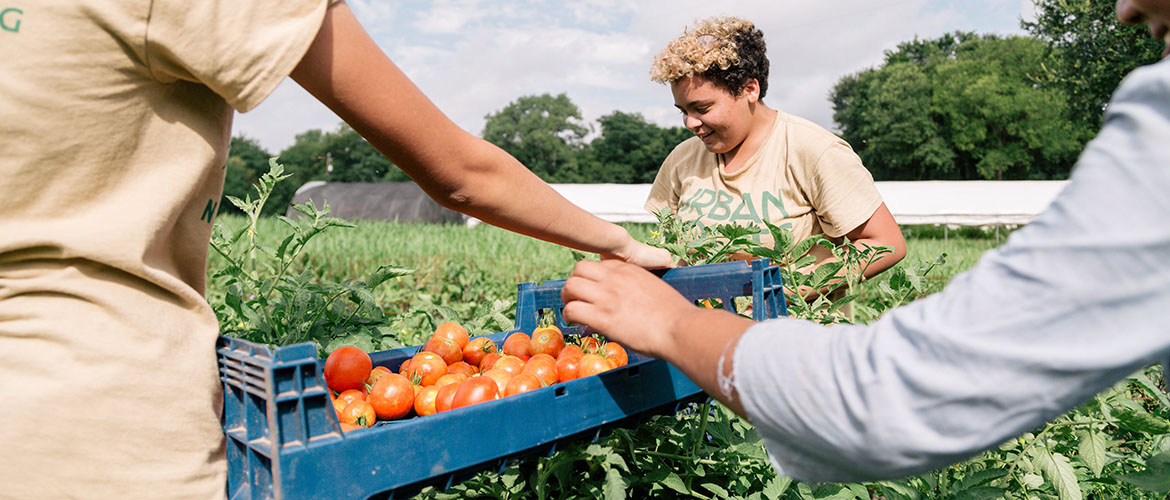Health disparities between white people and people of color come at a high price for Texans.
Differences in their ability to access basic needs, including health care, housing, transportation and nutritious food, dramatically reduce life spans, while costing the state nearly $8 billion annually in excess health care spending and lost productivity, research shows.
“It’s no secret that as a state we are not as healthy as we could be,” especially residents who are low-income people of color, says Amy McGeady, CEO of the Austin-based It’s Time Texas, a nonprofit health advocacy organization. “Health care is not just about what happens in the doctor’s office. We want to do more outside clinics to help people be healthy and fill critical gaps in health outcomes.”
The group has partnered with Blue Cross and Blue Shield of Texas (BCBSTX) to support local organizations and agencies across the state focused on reducing social and health inequities, especially in communities of color affected by the COVID-19 pandemic. BCBSTX awarded It’s Time Texas a Healthy Kids, Healthy Families® (HKHF) grant to support the efforts of the organization and eight subgrantees to address accessibility of basic needs, or social determinants of health, for children and families affected by the COVID-19 19 pandemic.
“These local organizations are hidden gems that are using every dime they have to do the work needed in their communities.”
The collaboration is helping fund programs and projects that are improving health outcomes, addressing factors that drive health disparities and removing barriers to health care exposed by the pandemic.
“It’s important that we support community-based organizations that are directly supporting children and families who have been impacted by the health, economic, and social implications of the pandemic,” says Sheena Payne, BCBSTX’s community investments director. “Our collaboration with It’s Time Texas allows us to strategically and directly target organizations that are focused on and moving the needle on health equity solutions.”
These local organizations, strongly rooted in their communities, provide resources that help residents survive and thrive — transportation, nutrition services and education, maternal care, substance use counseling, housing assistance and food access and meals.
“There are a lot of things stacked against people that are getting in the way of improving their health,” McGeady says. “These local organizations are hidden gems that are using every dime they have to do the work needed in their communities.”
Funding from the collaboration allowed the Burelson Health Resource Center in the Brazos Valley Region to expand substance use counseling and transportation services to better serve low-income, uninsured and older Burleson Country residents. Now, the center can transport people to dialysis appointments every day. Its counseling services offer clients assistance closer to their homes, reducing need for dozens of people to take off work or find transportation to travel outside the county to get the help they need.
The expanded services are helping “the people here who have the most difficulty,” says Albert Ramirez, the center’s executive director. “Our job is to strengthen their households.”
In the Rio Grande Valley, Harlingen-based Su Clinica uses its funding from the collaboration to provide nutrition education and economic assistance to 200 low-income patients who are obese and diagnosed with diabetes. Clinic providers write prescriptions for healthy eating and give patients $50 grocery store vouchers and culturally appropriate recipes during appointments. Patients are scheduled for three clinic visits and offered transportation vouchers when needed.
The clinic hopes to demonstrate that its program can lead to better eating habits, healthier lives and reduced health disparities after patients receive access to the resources and education they need.
“We are targeting the most vulnerable population,” says clinic manager Priscilla Bernal. “People here have lost jobs, lost their homes. Having someone care for your health means so much. Our mission has always been to serve our people.”
The Austin metro area’s Urban Roots, a farm-based youth leadership organization, is using its funding from the collaboration to improve health outcomes by providing fresh vegetables at low or no cost to residents and hunger relief organizations. Additionally, the project will help establish systems to grow more food and efficiently distribute it within the area.
“We help young people understand the issues around food access and why they should care about them,” says grants manager Melissa Laurel. “We’re meeting the immediate need by growing food and feeding our town and people who don’t have access. We’re also reaching out to people to make this a longer-term project to try to fix the system.”
Other organizations that have receive funding from the collaboration include:
- Giving Austin Labor Support (GALS), a nonprofit organization providing maternal health education and support
- Nutrition & Services for Seniors, a Beaumont nonprofit agency assisting older adults
- A Beaumont financial literacy program
- SON-SHINE Outreach Center, a Madisonville organization providing housing and utility assistance
- Good Neighbor Settlement House, a Brownsville nonprofit agency helping clients seek employment, return to school or find housing
“This gap-filling funding will not only support immediate outcomes to address health-related social needs,” McGeady says. “It will also provide community access to resources and programs offered by It’s Time Texas to build community capacity to sustain and adapt solutions long term.”

